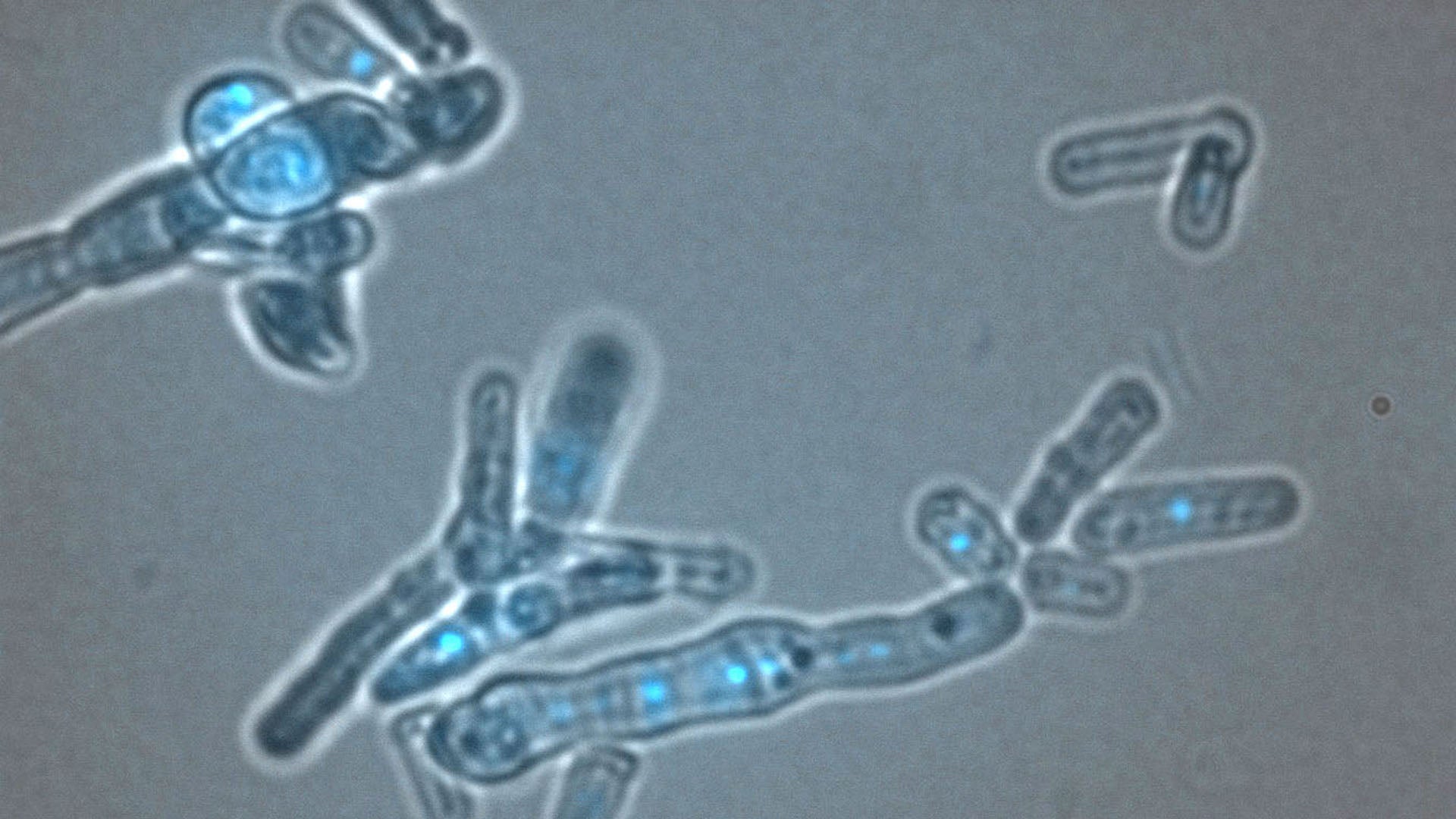Could yeast and humans be any more different? Going by looks alone, probably not. But peering into our genomes reveals surprising similarities. That’s because we share a common ancestor called LECA (last eukaryotic common ancestor). Before this single-celled organism died off around 2 billion years ago, it passed down Dicer, a key protein humans and certain yeasts still rely on today.
“Dicer is ancient,” explains Cold Spring Harbor Laboratory Professor Rob Martienssen. “The mechanisms behind how it directly interacts with RNA are well understood. How it does this in the context of the whole genome, and how that affects genome stability, is still being investigated.”
In 2014, Martienssen’s team discovered Dicer resolves conflicts between transcription (T) of DNA by RNA polymerase—the process of making RNA—and replication (R), the copying of DNA by DNA polymerase. T-R collisions can result in the formation of RNA-DNA hybrids called R-loops. These structures disrupt both processes, potentially leading to DNA damage and cancer. Previously, humans and yeast were thought to only need an enzyme called RNase H to clean up T-R collisions. Now, the team has found that both RNase H and Dicer are required.
“When T-R collisions occur, it’s like a broken zipper,” Martienssen explains. “The cell can deal with this by zipping up on the other side of the collision. But if you can’t get rid of the impediment, the R-loop itself, it’s a real problem. We found that Dicer helps pause RNA polymerase during collisions, giving the repair process time to catch up. Without Dicer, repair still occurs, but it causes mutations, cancer, and other issues.”
In humans, pausing RNA polymerase involves a protein structure called the Integrator complex. However, yeast relies only on Dicer. When the lab silenced Dicer in yeast, T-R conflicts began to pile up. The team was surprised to see that without Dicer, a related protein called Argonaute (Ago) made things worse:
“We were expecting Ago should be the same as Dicer, but in fact they do opposite things—which is insane. Normally, Ago would bind small RNAs that Dicer generated. If you remove Dicer, none of those small RNAs exist anymore. We found Ago now gets loaded with small RNAs from R-loops, potentially being part of the problem.”
Martienssen’s lab aims to paint a complete picture of Dicer’s role in maintaining the genome. “We’ve always thought of it as part of some sort of immune system, but Dicer clearly evolved from a transcription-replication origin,” he says. “That has profound implications for how we think about Dicer and understand fundamental processes of life itself.”
Written by: Nick Wurm, Communications Specialist | [email protected] | 516-367-5940
Funding
National Institutes of Health, Howard Hughes Medical Institutes, Institut Curie, French National Centre for Scientific Research, French National Research Agency, Ligue contre le cancer
Citation
Cheng, T., et al., “Transcription-Replication Conflict Resolution by Nuclear RNA Interference”, Molecular Cell, October 28, 2025. DOI: 10.1016/j.molcel.2025.10.003
Core Facilites
Principal Investigator

Rob Martienssen
Professor & HHMI Investigator
William J. Matheson Professor
Cancer Center Member
Ph.D., Cambridge University, 1986
